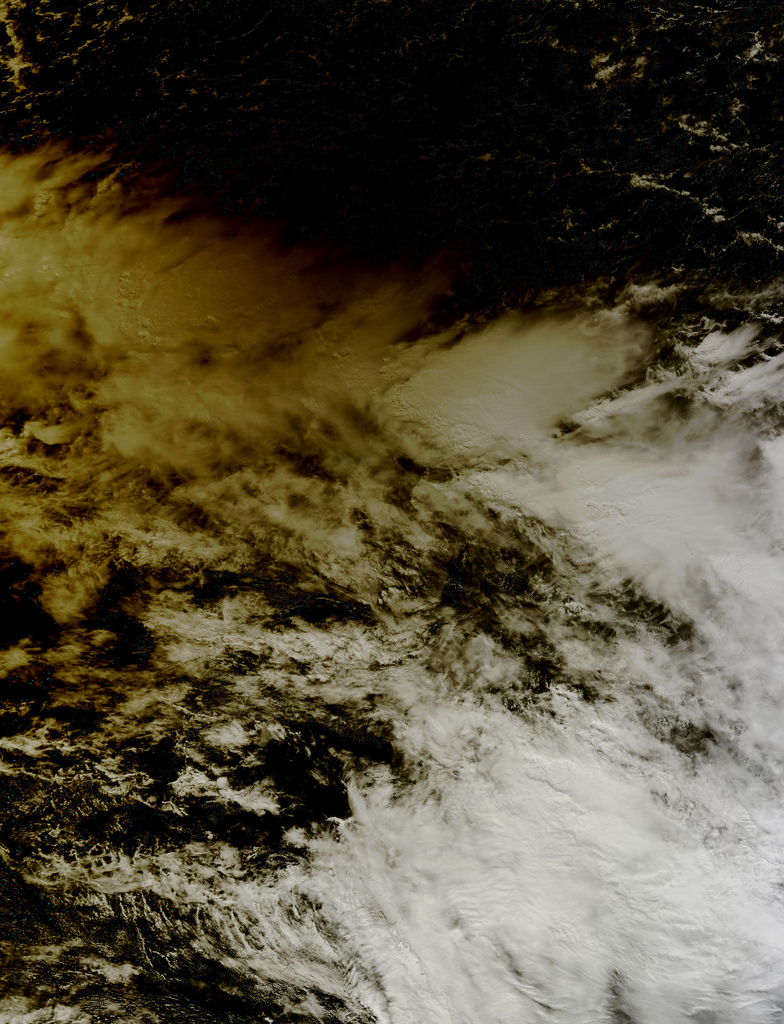
A NASA Earth-observing satellite has captured the moon's shadow darkening a patch of the Pacific Ocean during Thursday's stunning "ring of fire" solar eclipse.
Bright white clouds fade into darkness northeast of Australia in the solar eclipse image, which was taken by NASA's Terra spacecraft at 7:30 p.m. EDT (2330 GMT) Thursday (May 9), space agency officials said.
The first solar eclipse of 2013 turned the sun into a dazzling ring of fire Friday (May 10) for observers in northern Australia, eastern Papua New Guinea and other parts of the Pacific. Because this region is on the other side of the International Dateline, it was Thursday (May 9) in the U.S. during the eclipse. The moon passed directly in front of our star but didn't block it out completely, leaving a bright ring of light around the edges.
Such events are also called annular solar eclipses, from the Latin "annulus," which means "little ring." It was the second solar eclipse in less than six months for northern Australia, which was treated to a total eclipse in November.
The shadow path from which the "ring of fire" could be seen Thursday was long but slender, measuring no more than 107 miles (172 kilometers) across at its widest point. But a larger chunk of the planet — including the rest of Australia, most of New Zealand and many islands throughout the Pacific — witnessed a partial eclipse.
In fact, observers with good weather in Hawaii could see the moon reach almost halfway across the sun's disk. The eclipse was not visible from any other U.S. state.
NASA's Terra satellite has been observing Earth for more than a decade. The spacecraft, which launched in December 1999, uses five sensors to study the planet's climate and map the impact of human activity on ecosystems around the globe.
Get the Space.com Newsletter
Breaking space news, the latest updates on rocket launches, skywatching events and more!
Follow Mike Wall on Twitter @michaeldwall and Google+. Follow us @Spacedotcom, Facebook or Google+. Originally published on SPACE.com.
Join our Space Forums to keep talking space on the latest missions, night sky and more! And if you have a news tip, correction or comment, let us know at: community@space.com.

Michael Wall is a Senior Space Writer with Space.com and joined the team in 2010. He primarily covers exoplanets, spaceflight and military space, but has been known to dabble in the space art beat. His book about the search for alien life, "Out There," was published on Nov. 13, 2018. Before becoming a science writer, Michael worked as a herpetologist and wildlife biologist. He has a Ph.D. in evolutionary biology from the University of Sydney, Australia, a bachelor's degree from the University of Arizona, and a graduate certificate in science writing from the University of California, Santa Cruz. To find out what his latest project is, you can follow Michael on Twitter.









